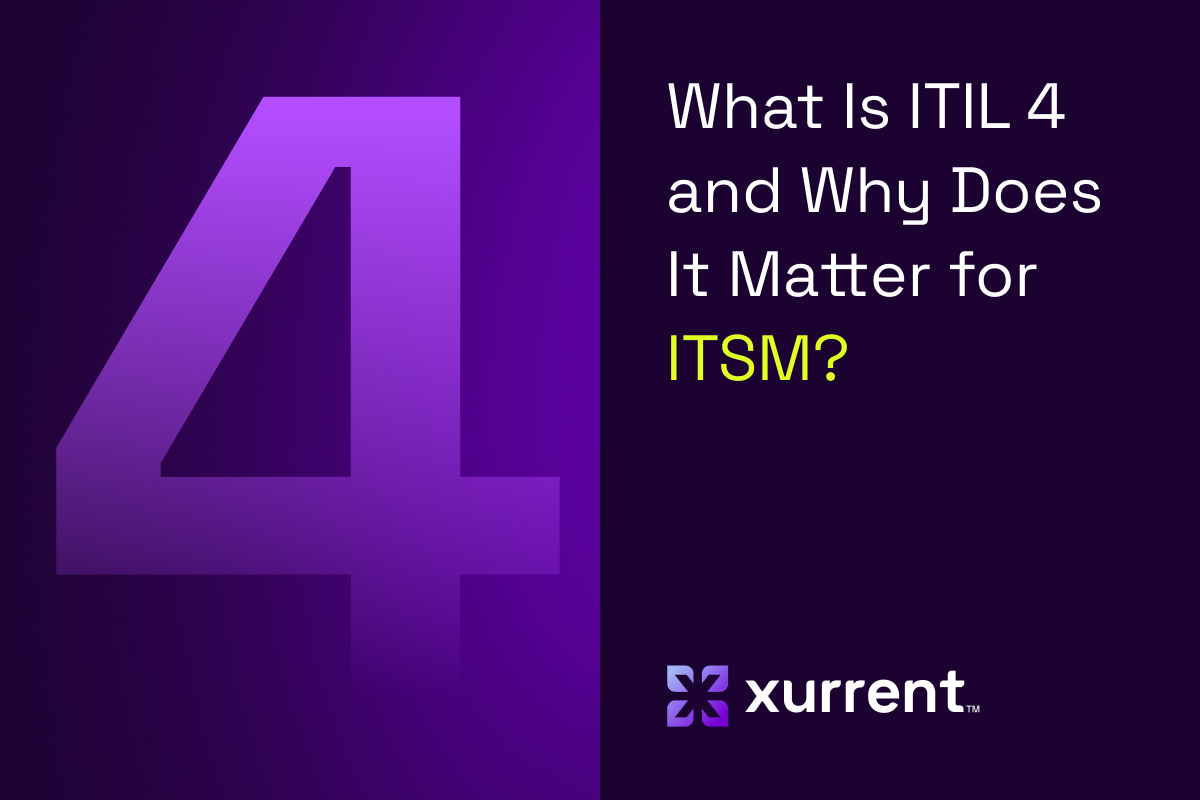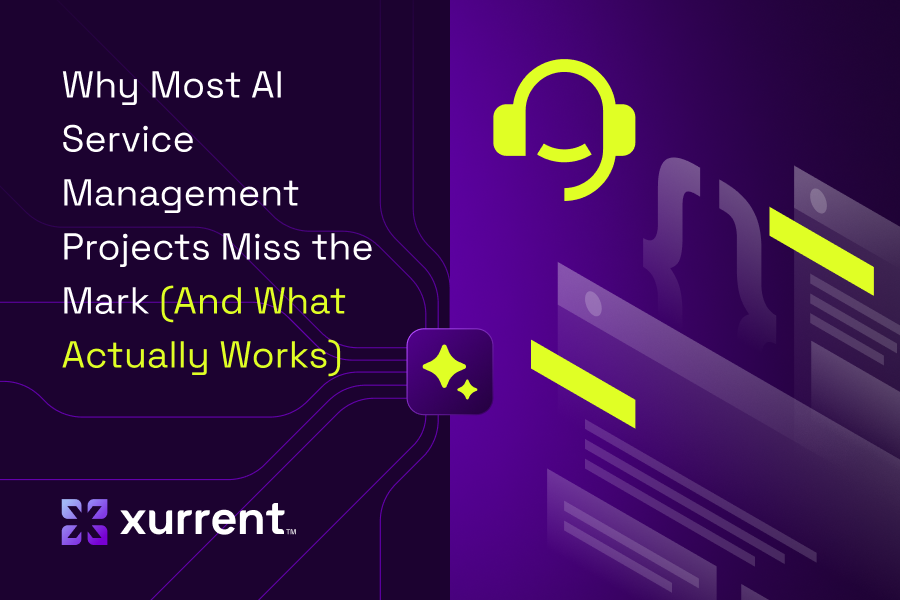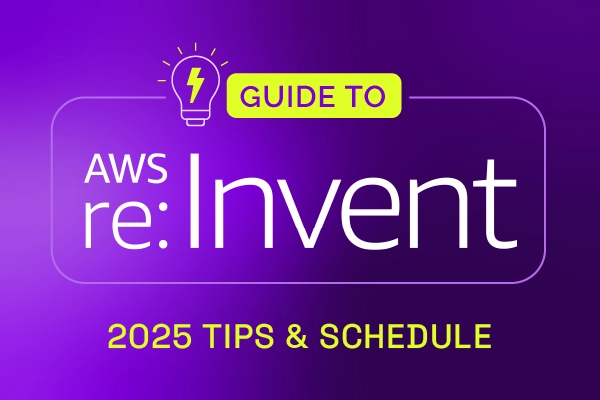Why ITSM Belongs in the Boardroom, Not the Server Room

ITSM shows up in IT budgets. It should show up in strategic planning.
Most boards discuss cloud migration, cybersecurity, and digital transformation. Few discuss IT Service Management. That represents a strategic blind spot.
Because ITSM is how you protect revenue during system outages, scale operations without ballooning costs, maintain compliance under audit, and turn IT from a cost center into a competitive advantage.
Consider the business impact: According to Gartner and the Ponemon Institute, IT downtime costs enterprises between $336,000 to $474,000 per hour. Forrester research shows organizations implementing ITSM achieve 195% ROI over three years, with 20% productivity gains and 25% fewer critical incidents.
These are board-level numbers. Revenue protection. Operational efficiency. Risk mitigation. Competitive positioning.
This is why ITSM belongs in your next board meeting. And this is what you need to know before that conversation.
What is ITSM? A Broad Level View
ITSM stands for IT Service Management. The technical definition matters less than the business outcome: ITSM is the operational framework that ensures your technology infrastructure supports business objectives rather than hindering them. Information technology service management (ITSM) refers to a process-driven approach for delivering IT services, focusing on standardized practices that prioritize customer needs, service quality, and continuous improvement.
Think of it as the difference between restaurants with documented systems versus kitchens where quality depends entirely on which chef shows up. One scales profitably. The other collapses under growth.
The business impact: Companies with ITSM systematically deliver IT services. Companies without ITSM react to problems, waste budget on repeat issues, and watch IT become a bottleneck during critical growth phases.
A concrete example: An employee needs a new laptop. With ITSM, automated workflows route the request, apply approval criteria, track fulfillment, and ensure day-one productivity. ITSM connects various business processes such as incident, problem, change, and asset management to streamline workflows and achieve organizational objectives. Without ITSM, email chains stretch across days, procurement stalls, and your new hire spends their first week unproductive.
According to HDI industry benchmarks, each IT support ticket costs $15.56 to resolve. Basic tickets. When issues escalate, costs jump to $80-$100+ per ticket. Multiply that by thousands of annual requests, then factor in that 35% of tickets are repeat issues you have already paid to solve once. Implementing workflow automation can help address these repeat issues and reduce overall IT support costs.
ITSM eliminates this waste while creating the operational foundation necessary for scale. An ITSM framework provides standardized practices, processes, and tools to optimize IT service management, ensuring continuous improvement and alignment with business goals.
The global ITSM market reached $11.91 billion in 2024 and is projected to hit $29.9 billion by 2030. ITSM operates within the broader IT industry, playing a key role in digital transformation and organizational efficiency. That growth reflects a strategic shift: forward-thinking boards recognize ITSM as infrastructure for competitive advantage, equal in importance to cloud strategy or cybersecurity posture. The service provider is central to delivering and managing IT services, ensuring alignment with both internal and external business needs.
Why ITSM is a Board-Level Priority
1. Revenue Protection
System downtime directly impacts revenue. IT Service Management analytics can help organizations gain critical visibility and reduce the risk of costly outages. When your CRM, ERP, or customer-facing platforms go down, money stops flowing.
Gartner and Ponemon Institute research shows IT downtime costs enterprises $336,000 to $474,000 per hour. For Fortune 500 companies in critical industries, that figure exceeds $5 million per hour.
A two-hour CRM outage represents $670,000-$950,000 in lost productivity and potential revenue impact. ITSM incident management processes reduce mean time to resolution by 30-40%, directly protecting your top line.
When sales teams cannot access customer data, deals slip to competitors. When service platforms go dark, customers evaluate alternatives. IT service quality directly correlates to revenue retention and customer satisfaction.
2. Cost Control and Operational Efficiency
IT budgets grow with headcount, but ITSM breaks that linear relationship. Forrester 2025 Total Economic Impact study found organizations implementing ITSM achieved:
- 20% increase in IT productivity
- 25% reduction in Priority 1 incidents
- $17.3 million in present value benefits
- 195% ROI over three years
Companies typically see 15-30% cost reduction in IT operations within the first year. That savings comes from eliminating repeat work, automating routine requests, and enabling self-service capabilities that deflect 40-50% of tickets without IT involvement. ITSM also drives service efficiency by delivering reliable and timely technology support through structured processes, ensuring users receive consistent and satisfactory solutions.
Your IT budget contains 30% waste in repeat issues, inefficient processes, and manual work that should be automated. ITSM captures that waste back while improving service quality.
3. Scalability Without Proportional Cost Increase
Growing from 100 to 500 employees without ITSM forces proportional IT hiring. With ITSM, automated workflows, self-service portals, and knowledge management systems absorb volume increases without linear cost growth.
This scalability matters for:
- Boards planning aggressive growth - Operational readiness determines execution speed
- PE-backed companies under growth mandates - Efficiency metrics impact valuation
- Public companies managing margin pressure - Scaling SG&A costs destroy earnings
Having IT teams that are specifically dedicated to ITSM ensures that scalable implementation and ongoing optimization are fully supported as your organization grows.
ITSM transforms IT from a scaling constraint into a scaling enabler.
4. Compliance, Audit Readiness, and Risk Mitigation
Regulatory environments demand documented IT processes. SOC 2, ISO 27001, GDPR, HIPAA all require demonstrable controls over IT service delivery, change management, and incident response. An IT governance framework, such as COBIT, provides a structured set of guidelines and practices that help organizations manage IT risks, ensure regulatory compliance, and improve overall business performance.
Without ITSM, compliance audits expose gaps that result in failed certifications, lost enterprise deals, and regulatory penalties. With ITSM, change logs, incident records, and access controls exist as standard operational output rather than audit scrambles.
For boards overseeing risk committees, ITSM represents operational risk mitigation. Documented processes reduce the probability of catastrophic failures. Audit trails demonstrate governance. Asset management ensures security and license compliance.
5. Competitive Differentiation
Your competitors with mature ITSM practices:
- Respond faster to market opportunities (IT enables rather than blocks)
- Maintain higher customer satisfaction (reliable service delivery)
- Scale more profitably (operational efficiency)
- Attract better talent (IT teams do strategic work rather than firefighting)
Collaboration between ITSM and development teams enables faster innovation and more reliable service delivery, giving these organizations a significant competitive edge.
The operational gap between companies with and without ITSM widens as complexity increases. What starts as minor inefficiency at 50 employees becomes existential bottleneck at 500.
Important ITSM Frameworks
A strong IT service management strategy is built on proven frameworks that provide structure, consistency, and best practices for managing IT services. Among the most important ITSM frameworks are ITIL (Information Technology Infrastructure Library), COBIT (Control Objectives for Information and Related Technologies), and ISO/IEC 20000. Each framework offers a unique perspective on service management, helping organizations establish robust service management systems and align IT operations with business objectives.
ITIL is widely recognized for its comprehensive approach to ITSM, offering detailed guidance on service desk operations, incident management, change management, and continual service improvement. Its ITIL processes help organizations deliver reliable business services and manage service requests efficiently. COBIT, meanwhile, focuses on IT governance and control objectives, ensuring that IT services support business strategy and regulatory requirements. ISO/IEC 20000 sets the international standard for IT service management, outlining requirements for planning, implementing, and continually improving a service management system.
By leveraging these important ITSM frameworks, organizations can standardize their service management practices, improve service quality, and ensure that IT services deliver maximum value to the business.
What ITSM Actually Delivers
ITSM encompasses multiple operational practices. From a board perspective, understand what each delivers for business performance:
Service Request Management: Operational Velocity
This eliminates the friction that slows business operations. Hardware requests, software access, account provisioning, and customer service requests all flow through automated workflows with clear SLAs and visibility.
Board-level impact: New hire productivity from day one rather than day five. Sales teams access tools immediately rather than waiting through IT queues. Operational velocity increases across the organization.
Incident Management: Revenue Protection
When systems fail, incident management ensures the right resources address the right problems in the right order. Revenue-critical systems receive immediate attention. Minor issues queue appropriately without consuming disproportionate resources.
Board-level impact: Downtime measured in minutes rather than hours. Customer-facing systems prioritized appropriately. Revenue protection through faster restoration of service. Enterprise service management solutions can further support these outcomes.
The 30-40% reduction in mean time to resolution directly translates to revenue protection. Every minute of CRM availability represents closed deals. Every hour of platform uptime represents satisfied customers.
Problem Management: Waste Elimination
Incident management addresses symptoms. Problem management eliminates root causes. If systems crash repeatedly, problem management finds why and fixes it permanently.
Industry research shows 35% of IT tickets are repeat issues. Organizations pay to solve identical problems multiple times. Problem management stops this waste by identifying patterns, analyzing root causes, and implementing permanent fixes.
Board-level impact: IT budget stops funding repeat work. Teams focus on strategic initiatives rather than recurring firefighting. Operational costs decrease while service quality improves.
Knowledge Management: Self-Service Economics
IT teams hold institutional knowledge in their heads. When they leave, that knowledge disappears. When they are unavailable, simple questions become bottlenecks.
Knowledge management captures solutions in searchable systems. Employees find answers themselves. IT involvement becomes exception rather than rule.
Organizations with mature knowledge management see 40-50% ticket deflection. Nearly half of IT requests resolve without IT involvement. That efficiency directly improves IT ROI.
Board-level impact: IT spending shifts from operational support to strategic initiatives. Employee productivity increases through immediate problem resolution. IT team capacity multiplies without headcount increases.
Change Management: Risk Mitigation
System changes cause 30% of IT incidents when implemented without proper controls. Change management creates governance: what changes, who approves, what testing occurs, what rollback plans exist.
Board-level impact: Fewer outages caused by poorly planned changes. Audit trails demonstrate governance. Compliance requirements satisfied through documented processes. Operational risk decreases measurably.
Asset Management: Cost Visibility and Optimization
Boards often discover companies pay for hundreds of unused software licenses, maintain redundant systems, or lack visibility into technology spend across departments.
Asset management tracks every technology investment: hardware, software, licenses, infrastructure. This visibility enables optimization decisions and ensures license compliance.
Board-level impact: 10-20% waste elimination in software spending within first quarter. License compliance reduces legal risk. Full cost visibility enables informed budget decisions.
Configuration Management: Service Integrity
Configuration management is a cornerstone of effective IT service management, dedicated to maintaining the integrity and reliability of IT services. By systematically tracking and managing configuration items—such as hardware, software, and network components—organizations can ensure that every aspect of their IT environment is properly documented and controlled. This proactive approach reduces downtime risks, prevents network outages, and safeguards service quality, all of which are essential for maintaining high levels of customer satisfaction.
With robust configuration management in place, businesses can quickly identify and resolve issues, minimize service disruptions, and deliver consistent, reliable IT services. This not only enhances the overall customer experience but also supports the organization’s reputation for dependable service delivery.
ITSM Best Practices
Adopting ITSM best practices is essential for organizations aiming to maximize the value of their IT services, helping to transform IT from a cost center to a value-driven strategic partner. Key practices include combining the structured processes like incident and change management discussed above, establishing a responsive service desk (pro tip: consider AI driven platforms to reduce Tier 1 ticket volume), and prioritizing continual service improvement through deep analytics and learnings.
By following these best practices, businesses can significantly reduce downtime costs, boost customer satisfaction, and enhance employee productivity. A focus on continual improvement ensures that IT evolves to meet changing business needs, while an AI service desk reduces the number of frustrated customers and supports better business outcomes. Ultimately, ITSM best practices help organizations deliver high-quality IT services that drive growth and operational excellence.
Common Board-Level Objections Addressed
“Our IT team should handle this without board involvement”
IT teams implement tactics. Boards set strategy. ITSM success requires organizational change, budget allocation, and cross-functional coordination that exceed IT authority.
Furthermore, ITSM delivers board-level outcomes: revenue protection, cost control, compliance, scalability. These business objectives demand executive ownership.
“We’re too small for ITSM”
Small businesses lose $50,000-$427,000 per hour during downtime. Companies with 50+ employees see measurable ITSM benefits. ROI appears faster in smaller organizations because inefficiencies are more visible and faster to address.
The question becomes: at what revenue level does $50,000-per-hour downtime risk warrant operational investment in prevention?
“This sounds like expensive software implementation”
ITSM is operational framework, software is enabler. There are a wide variety of ITSM software tools available, each offering different functionalities and levels of flexibility; choosing adaptable, user-friendly solutions is crucial to ensure IT services align with business needs. Organizations must fix processes before selecting tools. Many companies start with basic ticketing systems and knowledge bases, expanding sophistication as maturity increases.
The expensive failure mode is buying enterprise software without process design, then watching teams work around systems they find cumbersome. Remember, as stated above in the Forrest Total Economic Impact report, companies that succesfully implement ITSM solutions find a 195% ROI in 3 years.
“What if we hire more IT staff instead?”
Additional headcount addresses capacity, ITSM addresses efficiency. Without systems, larger IT teams simply execute inefficient processes at greater scale.
Forrester research shows 20% productivity improvement with ITSM. That productivity gain delivers equivalent capacity to significant headcount increase, while also improving service quality, reducing costs, and creating scalability.
Organizations need both appropriate staffing and efficient systems. ITSM often reveals that current teams, properly supported, deliver significantly more value than assumed.
Future of ITSM and AI
The future of IT service management is being shaped by rapid advancements in automation, artificial intelligence, and machine learning. As organizations strive to deliver faster, more reliable IT services, the adoption of ITSM software and self-service portals is becoming increasingly important. These technologies enable real-time monitoring, predictive analytics, and automated resolution of routine issues, all of which contribute to lower downtime costs and improved service delivery. Just make sure you find and ITSM provider with built-in AI, and not just a GPT bolt-on chatbot. AI is most effective when it's built in and can see your entire stack to make the most meaningful impact across the business.
Looking ahead, ITSM will play a pivotal role in enhancing customer experience, with a greater emphasis on proactive support and personalized service. By embracing these innovations, businesses can not only meet but exceed customer expectations, driving higher satisfaction and loyalty. Staying ahead in the evolving ITSM landscape means continuously adapting practices and investing in tools that support efficient, scalable, and customer-centric IT service management.
Conclusion: The Board-Level Call to Action
ITSM protects revenue through faster incident response. ITSM controls costs through efficiency and automation. ITSM enables scale without proportional expense increases. ITSM mitigates risk through compliance and governance. ITSM delivers competitive advantage through operational excellence. ITSM also supports continuous improvement by enabling ongoing evaluation and refinement of IT service management practices, ensuring efficiency, quality, and alignment with business goals.
These outcomes belong in board discussions alongside revenue strategy, market positioning, and capital allocation.
The global market projects to reach $29.9 billion by 2030 because organizations worldwide recognize ITSM as strategic infrastructure. Your competitors likely already made this investment. The operational gap widens quarterly.
ITSM belongs in the boardroom because the outcomes it delivers matter at the board level. Revenue protection, cost control, scalability, compliance, and competitive positioning are strategic priorities.
The question facing boards is how long you can delay strategic operational investment while competitors capture the advantage.
Frequently Asked Question
Q: How much does ITSM implementation cost versus the business risk of not implementing?
A: Implementation costs vary from $10,000 for small companies to $500,000+ for enterprise deployments. Evaluate this against business risk: each IT ticket costs $15.56 to resolve (with escalations costing $80-$100+), downtime costs enterprises $336,000-$474,000 per hour, and 35% of tickets represent repeat issues you pay to solve multiple times. Forrester research shows typical ROI within 6-12 months with 195% three-year return. The financial case typically justifies implementation within single budget cycle.
For organizations looking to further optimize their IT ticketing and support, Xurrent’s AI Service Desk offers automation and enhanced workflow solutions. A well-maintained service catalog is also essential, serving as a directory of available IT services and streamlining service request management.
Q: Why is this a board-level decision rather than an IT initiative?
A: ITSM delivers board-level outcomes: revenue protection (reducing downtime impact), cost control (15-30% operational cost reduction), scalability (sub-linear IT cost growth during expansion), compliance (audit readiness and risk mitigation), and competitive positioning (operational efficiency advantage). These strategic objectives require executive sponsorship, cross-functional coordination, and organizational change beyond IT department authority. Successful ITSM implementation parallels ERP or CRM deployment in requiring board-level strategic ownership. Service management frameworks, such as the ITIL framework, provide structured approaches and best practices for aligning IT services with business objectives.
Q: What ROI timeline should boards expect?
A: Forrester 2025 Total Economic Impact study found organizations achieve 195% ROI over three years with $17.3 million in quantified benefits. Early wins appear within 90 days through knowledge base implementation and service request automation, typically reducing ticket volume 30-40%. Full ROI realization occurs within 6-12 months through combined cost reduction, productivity improvement, and downtime mitigation. Three-year ROI reflects sustained benefits: continued cost optimization, scalability without proportional IT growth, and competitive advantages from operational efficiency.
Q: How does ITSM maturity affect company valuation during M&A?
A: Due diligence evaluates operational maturity as key value driver. ITSM demonstrates: documented processes satisfying compliance requirements, scalable operations supporting growth plans, cost visibility enabling accurate projections, and reduced integration risk through standardized practices. Private equity particularly values ITSM in portfolio companies because it enables operational improvements that drive value creation. Companies lacking ITSM face due diligence questions regarding operational risk, compliance gaps, and scalability constraints that negatively impact valuations or create post-close integration challenges.
Q: Should boards prioritize ITSM or other digital transformation initiatives?
A: ITSM enables other digital initiatives rather than competing with them. Cloud migration, digital transformation, and new technology adoption all depend on underlying IT service delivery capability. Organizations implementing major technology changes without ITSM foundation experience: higher failure rates from poor change management, longer timelines from inefficient request handling, budget overruns from repeat issues and rework, and user adoption challenges from inadequate support structures. ITSM creates operational foundation that accelerates and de-risks other strategic technology investments. Sequencing consideration: implement basic ITSM practices before or concurrent with major digital initiatives. ITSM also supports modern software development by integrating processes and fostering collaboration between IT and development teams.
Q: How does ITSM affect IT talent retention and recruitment?
A: ITSM significantly improves IT talent retention by eliminating chronic firefighting, reducing burnout from repetitive work, enabling focus on strategic projects rather than operational trivia, providing clear processes rather than chaotic reactive work, and demonstrating organizational investment in operational excellence. Organizations with mature ITSM attract stronger IT talent because professionals prefer environments where they contribute strategically rather than spending time on password resets and repeat issues. From board perspective, ITSM protects human capital investment in IT organization while improving productivity and reducing costly turnover.
Q: How do we measure ITSM success at the board level?
A: Boards should track strategic KPIs rather than operational metrics: Financial impact showing IT cost as percentage of revenue (target: decreasing while service improves) and documented cost savings from efficiency gains (15-30% range), Revenue protection showing average downtime per quarter (target: decreasing) and revenue-critical system availability (target: 99.9%+), Scalability demonstrating IT tickets per employee ratio (target: flat or decreasing during growth) and IT headcount growth versus overall headcount growth (target: sub-linear relationship), Risk mitigation including compliance audit results (target: zero findings related to IT controls) and critical incident frequency (target: 25% reduction), and Competitive positioning through employee satisfaction with IT services (target: 85%+) and time-to-productivity for new hires (target: first day). Review quarterly as strategic KPI alongside other operational metrics.
Q: What frameworks or best practices should we consider for ITSM?
A: Leading organizations adopt the ITIL framework, a structured set of best practices, guidelines, and processes for implementing IT Service Management (ITSM). ITIL practices help manage the entire service lifecycle, align IT services with business needs, and improve service quality and efficiency. Service management frameworks like ITIL provide comprehensive and adaptable resources for organizations across industries. Additionally, the Microsoft Operations Framework (MOF) is designed to optimize IT services that utilize Microsoft technologies, offering guidance tailored to those environments.
Q: How does ITSM work and what does it deliver?
A: ITSM works by implementing structured ITSM processes such as incident management, change management, and service request management. These interconnected processes help organizations deliver consistent, efficient IT services aligned with business goals, often supported by frameworks like ITIL. ITSM delivers improved service quality, operational efficiency, risk mitigation, and better alignment between IT and business objectives.
Q: How does ITSM address security and automation?
A: ITSM supports security and automation by standardizing processes, enabling rapid response to incidents, and integrating with AI-driven tools for proactive monitoring. User authentication is a critical component, especially as AI-enhanced security solutions monitor networks, prevent phishing, and automate security responses to ensure secure access and protect organizational data.

Xurrent named a Market Leader in Research In Action’s Vendor Selection Matrix™ for IT & Enterprise Service Management Solutions
Xurrent earns #1 rankings in customer satisfaction, price vs value, and recommendation index in Research In Action's global ITSM/ESM Vendor Selection Matrix report.





